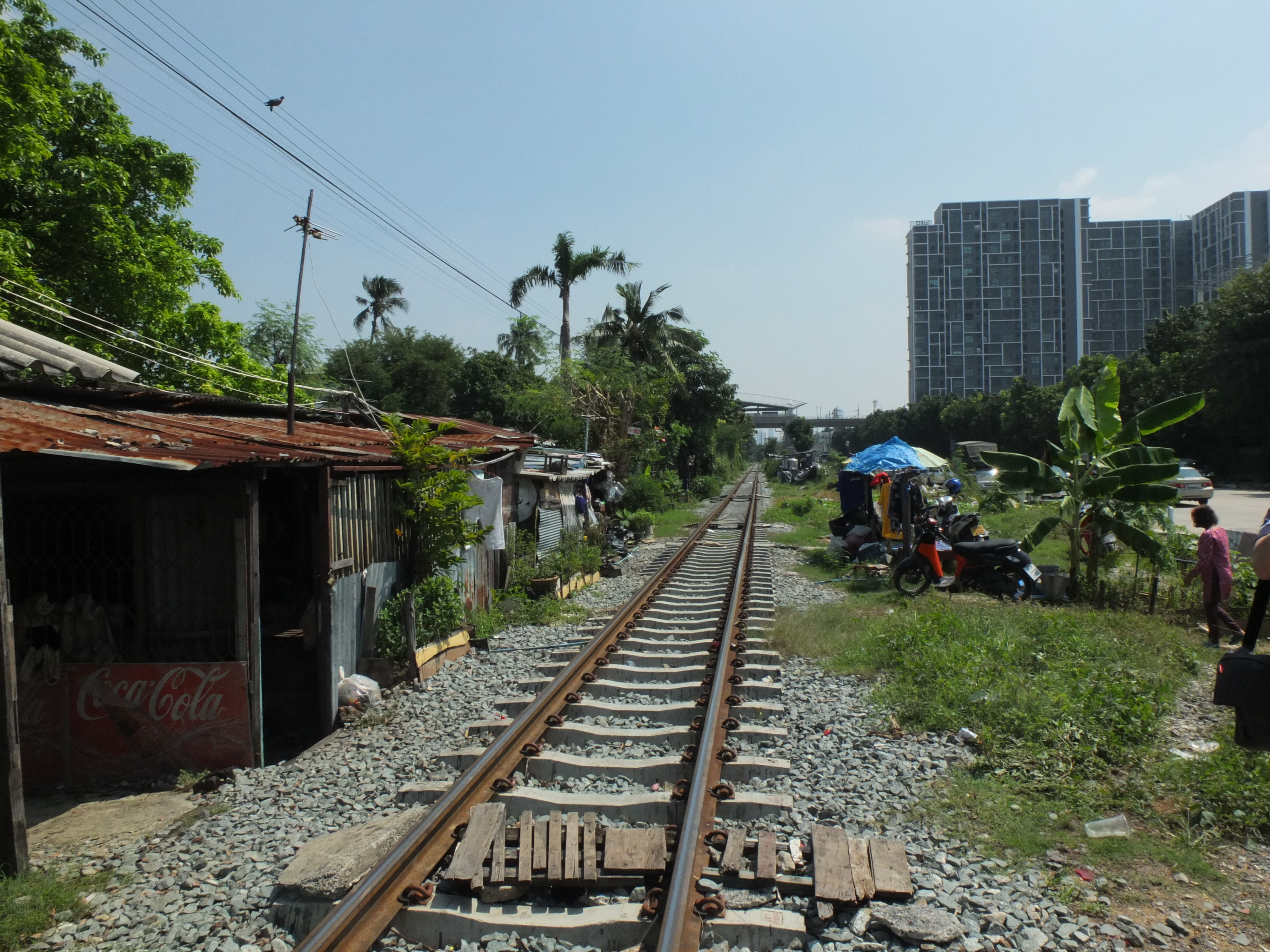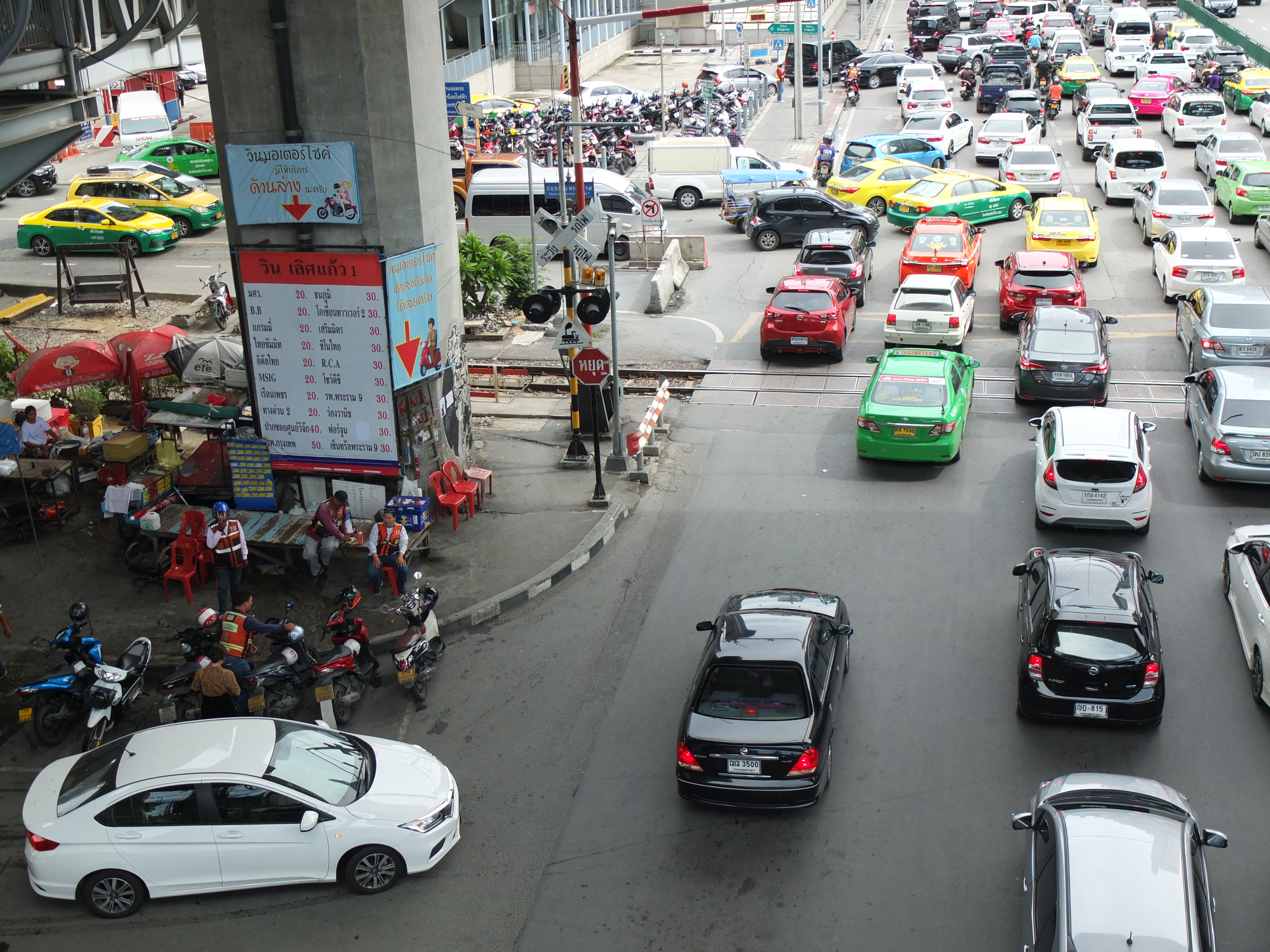Trees perform invaluable aesthetic, social, environmental, and ecological functions, but only when they grow well. Urban environments can be difficult for trees’ growth. Clashes with wires and buildings; limited space for roots to extend; soil that lacks nutrients or pore space for roots to breathe – these are just a few of the common adversities facing urban trees in Bangkok, writes Chieh-Ming Lai
_______________________________________________
In mid-2022, Bangkok Governor Chadchart Sittipunt launched his campaign to plant one million trees in the Thai capital. Just one of the rockstar governor’s two hundred-plus policies proposed before his landslide election victory, the campaign aimed to enhance a variety of environmental and ecological benefits, from cleaner air to increasing pedestrian-friendly shade. Tree planting movements can increase urban greenery and create a stronger sense of community through public participation and facilitate environmental education for the public. As such, similar urban environmental initiatives are favoured by city planning authorities and have been trialled in many cities in Europe (for example, Belfast and Warsaw) and North America (including New York and Mississauga), as well as in Singapore, one of Thailand’s neighbours and a globally renowned green city.
Chadchart’s tree-planting campaign appeared to imitate successful policy models seen overseas, and its implementation by the Bangkok Metropolitan Administration (BMA, the city government) has received support from corporate bodies such as CP Foods. Backed by positive public opinion, the Governor has said that the goal of planting one million trees could be doubled within his four-year term. But what comes next after the tree saplings are planted?
Trees perform invaluable aesthetic, social, environmental, and ecological functions, but only when they grow well. Urban environments can be difficult for trees’ growth. Clashes with wires and buildings; limited space for roots to extend; soil that lacks nutrients or pore space for roots to breathe – these are just a few of the common adversities facing urban trees in Bangkok. Without proper and ongoing maintenance, vigorously growing tree branches can tangle dangerously with overhead wires (see Figure 1), roots may intrude into drainage pipes or break through the pavement, and trees with weak structures can easily fall down, particularly when the soil is softened during the rainy season.
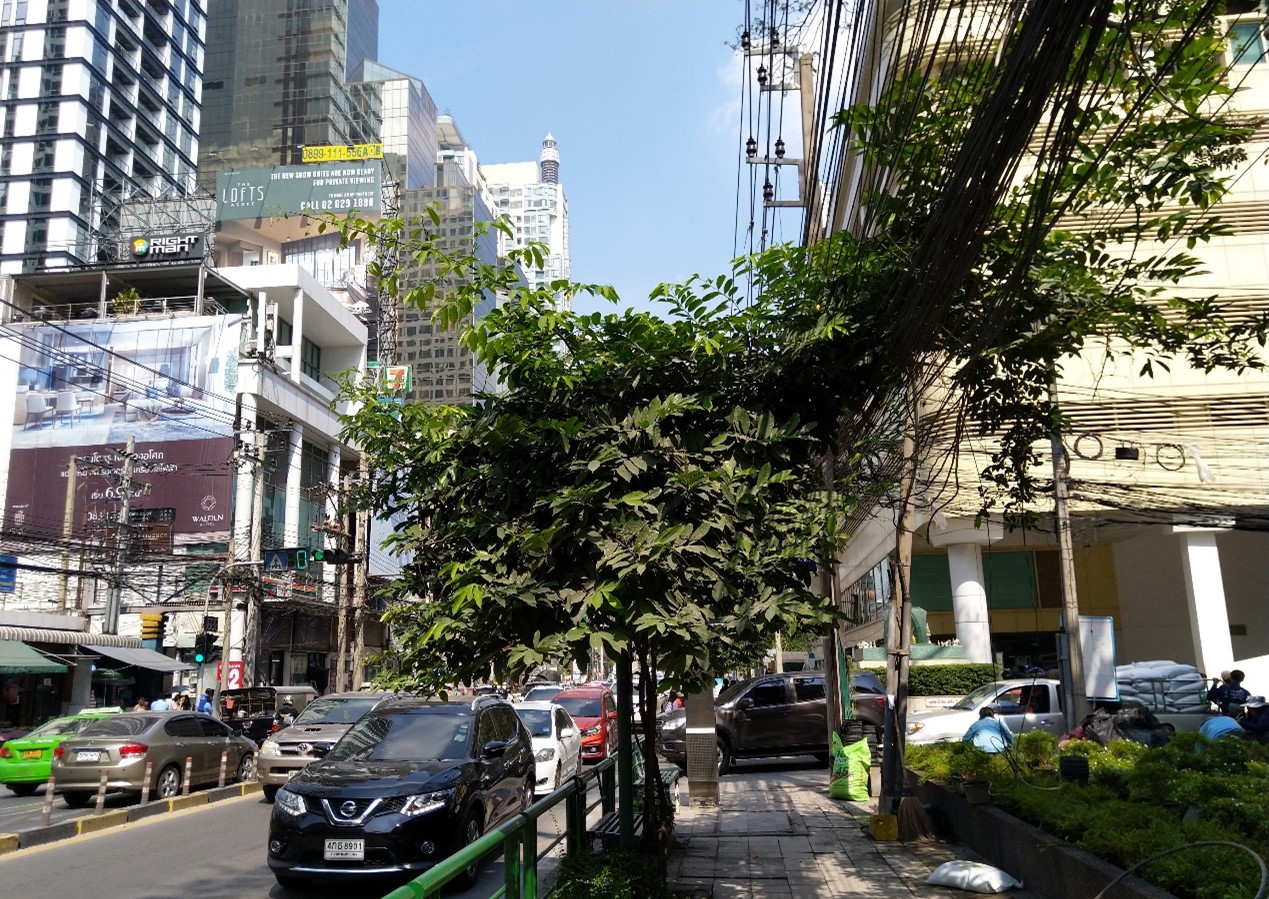
To address concerns about tree maintenance, Chadchart has proposed to recruit professional arborists to provide BMA staff with guidelines for appropriate tree care. Interestingly, on his website, the Governor even cited a case of blatant poor pruning along the famous Wireless Road (Witthayu Road) in 2020. This case was presented to show that the tree care training program for BMA staff in 2018 was insufficient and that more effective methods were needed. In consultation with forestry scholars and civil society groups, the Governor has proposed more concrete strategies to deepen the application of arboricultural expertise. These include providing arboricultural training for staff in charge of pruning, assigning district arborists for tree maintenance, assigning designated trees as public property, setting up protocols of tree care in each district, re-selecting appropriate street tree species, and establishing pruning guidelines.
These strategies are essential for ensuring tree maintenance practices in Bangkok become more effective. However, there is an important factor missing: the input of local knowledge and experiences.
Arboriculture – the science of managing trees in non-forest contexts (namely, human settlements) – is largely based on the urbanisation experiences of cities in Western Europe and North America, which have longer planning histories and different development paths from Bangkok. Transplanting a set of knowledge from one place to another is never an easy matter. This has been evident in recent attempts to introduce arboricultural expertise into Thailand. In fact, the poor pruning practices that occurred in Wireless Road in 2020, following a tree care training program in 2018, highlight these limits.
The training program was a collaboration between civil society groups, the BMA, and foreign and local tree experts. It was intended to familiarise frontline BMA staff with tree climbing techniques for less aggressive pruning. By using this technique, staff could prune specific trees and branches rather than slashing trees indiscriminately, thus reducing notorious over-pruning. However, the BMA staff’s application of tree climbing techniques was quite limited. For pruning street trees in particular, staff still preferred standing on trucks (see Figure 2) rather than using climbing gear to access tree branches. Such practices puzzled civil society groups and tree experts.
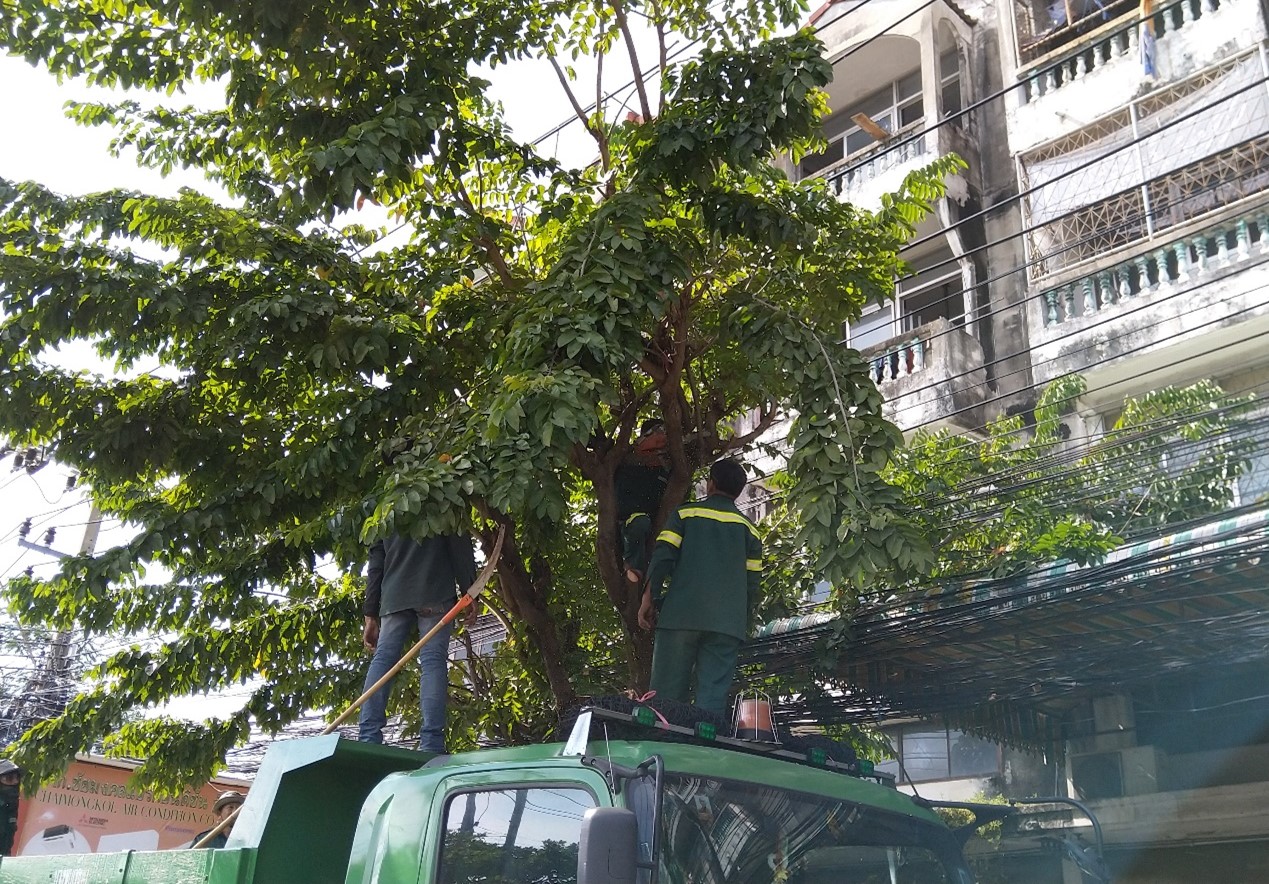
From 2018 to 2020, I interviewed frontline BMA staff who were trained to employ tree climbing techniques, key members of civil society groups, managerial BMA officials, and tree experts in order to assess the outcomes of this training program. The interviews were cross-examined with observation notes and pictures of BMA frontline staff working. Based on this research, I found there were a variety of reasons why BMA staff stick to pruning street trees by standing on their trucks.
First, district office teams can easily access most street trees in Bangkok with trucks, as the majority are just 4-6 meters tall. Trees of this size might not yet have developed sturdy branches to support a tree climber’s body weight. If a branch snaps when a labourer is ascending, severe injuries could happen. In addition, it is difficult to set up the climbing ropes on street trees due to the traffic and lack of open space; the climbing ropes could easily tangle with overhead wires (see Figure 3). Given the size and accessibility of street trees, pruning by standing on trucks is more convenient and feasible than employing tree climbing techniques.
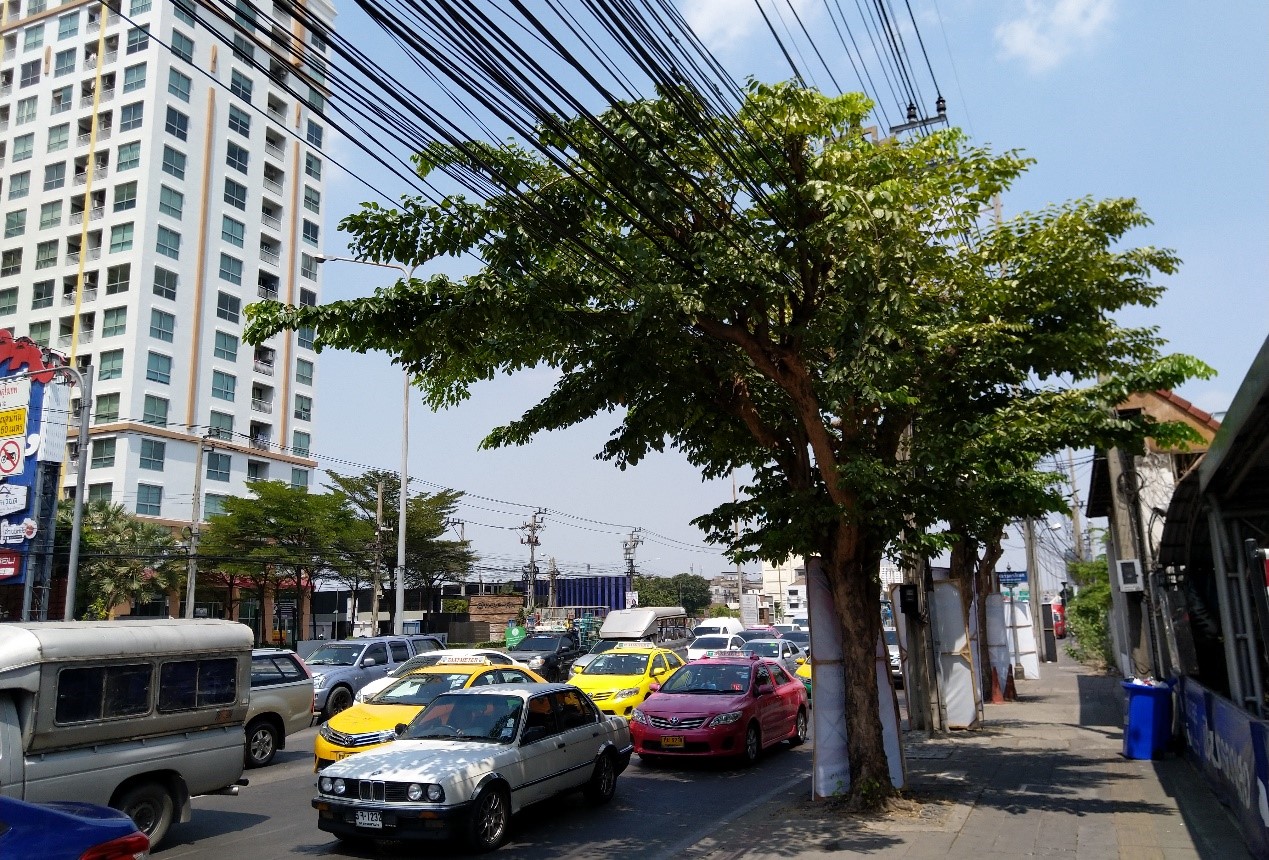
Second, pruning has different purposes in different spaces. Mature trees in large green spaces such as palace gardens, parks, and temple yards are expected to be beautifully shaped. Tree climbing techniques are ideal for patient, aesthetic trimming. By contrast, the district office teams are mostly concerned about the risks associated with tree-wire tangling, which can result in trees collapsing or bringing down power poles, with sometimes tragic consequences. In other words, for district office staff, the primary goal of pruning street trees is to reduce potential risks rather than to create nicely shaped trees. To this end, trucks (and scaffolding, when necessary) can help staff remove tangled branches more efficiently, while tree climbing is simply not fit for this purpose.
Third, the task of pruning street trees faces greater time pressure than pruning trees in open spaces. In order to minimise the impact of pruning work on traffic, district office teams prune street trees as quickly as possible. They principally prune street trees in the morning, from 9 am to around lunchtime, to escape the afternoon heat or rains. There is also a logistical factor, as trucks typically head to the fertilizer factories to unload pruned materials in the afternoon while the remaining staff have to address non-pruning tasks. These combined factors have contributed to the timeframe of pruning street trees using trucks.
The above specific urban factors, including tree size and accessibility, the impact of pruning on traffic, weather, logistics, and the purpose of pruning, considerably limit the application of tree climbing techniques in Bangkok. It is important to note that these dynamics are commonly faced in the staff’s everyday workplace, but were not represented on the training sites, which were large parks. Hence, while BMA staff have applied tree climbing techniques on mature trees in large parks and similar open green spaces, they rarely apply them on street trees.
BMA frontline staff are often criticised for lacking appropriate knowledge of tree maintenance and conducting aggressive pruning that damages street trees. However, in reality, they understand the various constraints of tree pruning well, and they have their own concerns and priorities. When civil society groups and higher-level BMA officials took steps to introduce global tree care expertise, the views of frontline staff did not receive sufficient attention.
Without justifying the inappropriate tree pruning that sometimes occurs, it should be emphasised that these frontline labourers are well aware of the local context and challenges of tree care practices in their everyday workplaces. Their collective experience is not likely to be expressed in sophisticated academic language and draws little attention compared to the globalised knowledge arising from renowned green cities. However, patiently listening to local experiences is key to grasping the specific challenges of tree maintenance in Bangkok. Only by doing so will expertise such as tree climbing and other arboricultural techniques work more effectively in the specific local context of Bangkok and other cities in Thailand.
______________________________________________
*Banner photograph by and copyright of the Author.
*The views expressed in the blog are those of the authors alone. They do not reflect the position of the Saw Swee Hock Southeast Asia Centre, nor that of the London School of Economics and Political Science.



